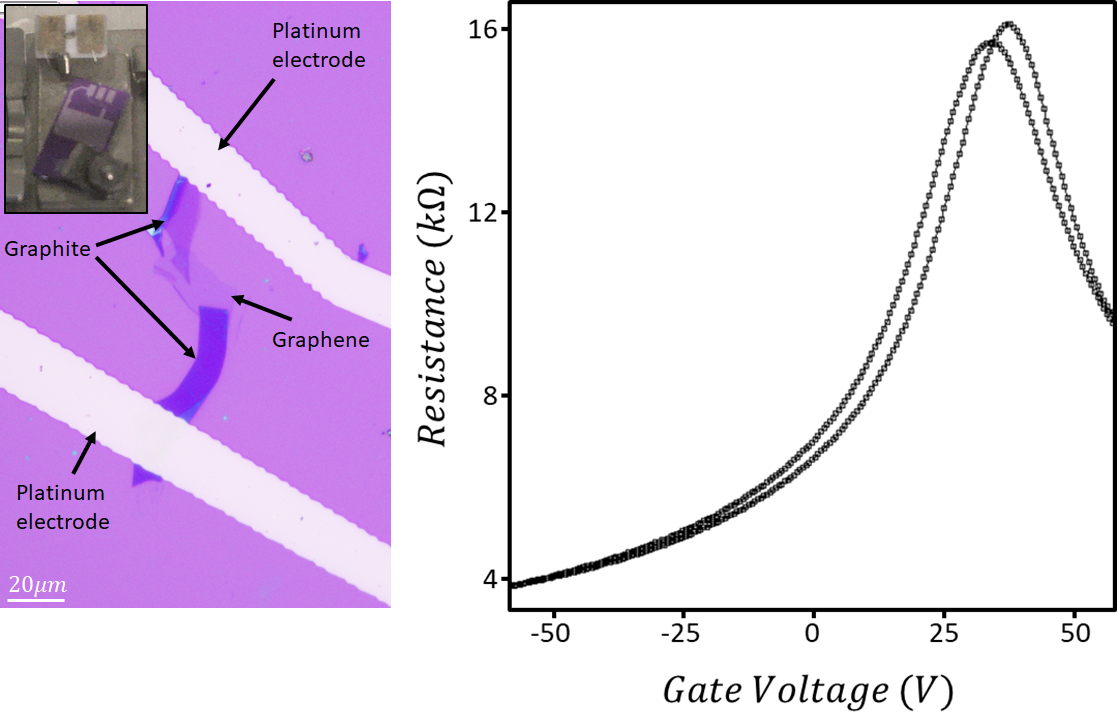I had the unique opportunity this semester to guide an undergraduate student, Chris Cott, through a hands-on, comprehensive project in our laboratory. The essence of this venture was two-fold: firstly, to integrate Chris' efforts into my own ongoing research in 2D materials, and secondly, to immerse him in a variety of techniques and physical concepts.
My most recent research is primarily focused on synthesising 2D materials on a platform that allows us to manipulate their electronic properties through the application of an electric field. This platform is a field-effect transistor-like device constructed by layering ultra-thin flakes of exfoliated materials, like graphene, onto a silicon chip. Such devices facilitate deeper ways to explore and understand the electronic properties of these 2D materials and how they might be used in future low-energy electronics.
Chris' project was an integral part of this larger picture; his ambitious objective was to construct a working graphene device that would help me advance my own project. To do this, Chris had to:
- Exfoliate graphene and graphite flakes onto an SiO2/Si substrate
- Use optical microscopy to identify potential graphene flakes based on their contrast
- Confirm that these flakes were indeed monolayer graphene by performing Raman spectroscopy
- Transfer graphene flakes onto a chip with pre-fabricated metallic electrodes
- Transfer graphite flakes to bridge the gaps between the platinum electrodes and the graphene flake to establish good electrical connection between them
- Conduct an electronic transport measurement to verify the functionality of the graphene device

Anyone who’s worked with transferring and stacking exfoliated materials before would appreciate how challenging this process can be, especially when working in a 12-week timeframe with no prior experience. Chris not only achieved all of these objectives but demonstrated remarkable independence after initial training on the equipment and techniques. Considering every step of this process was brand new to him, his ability to work autonomously and efficiently was commendable. His final presentation today was not just a demonstration of his technical proficiency, but also a testament to his understanding of the project's broader scientific context. Well done Chris!